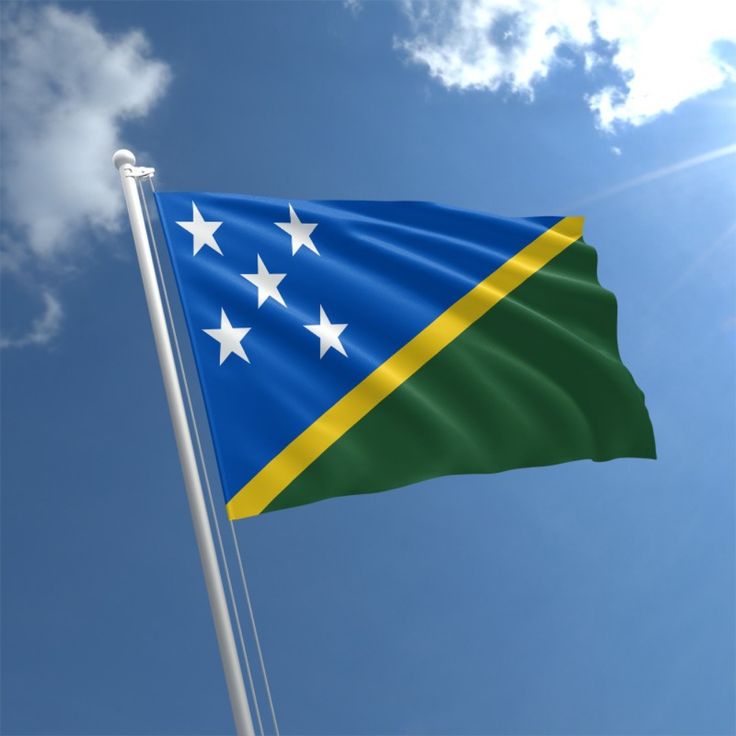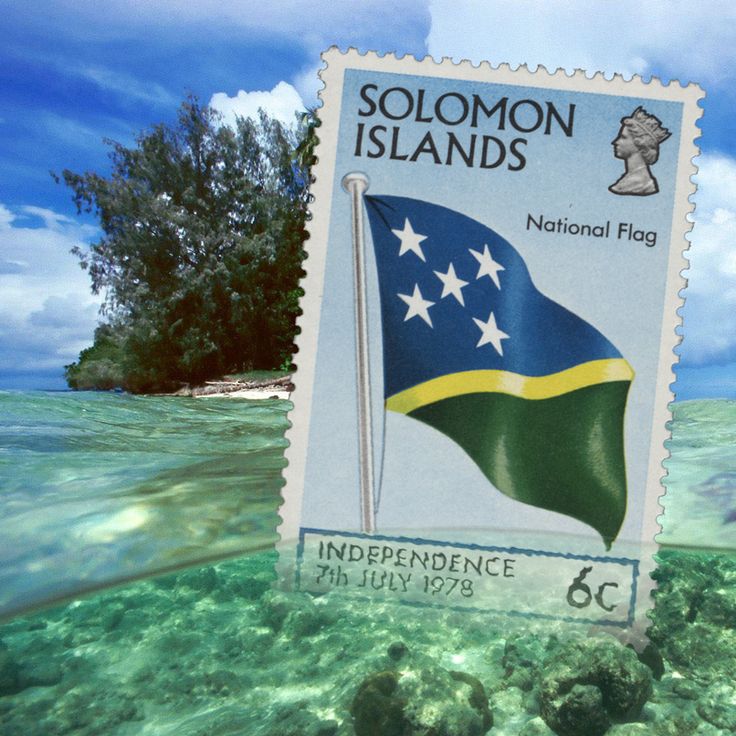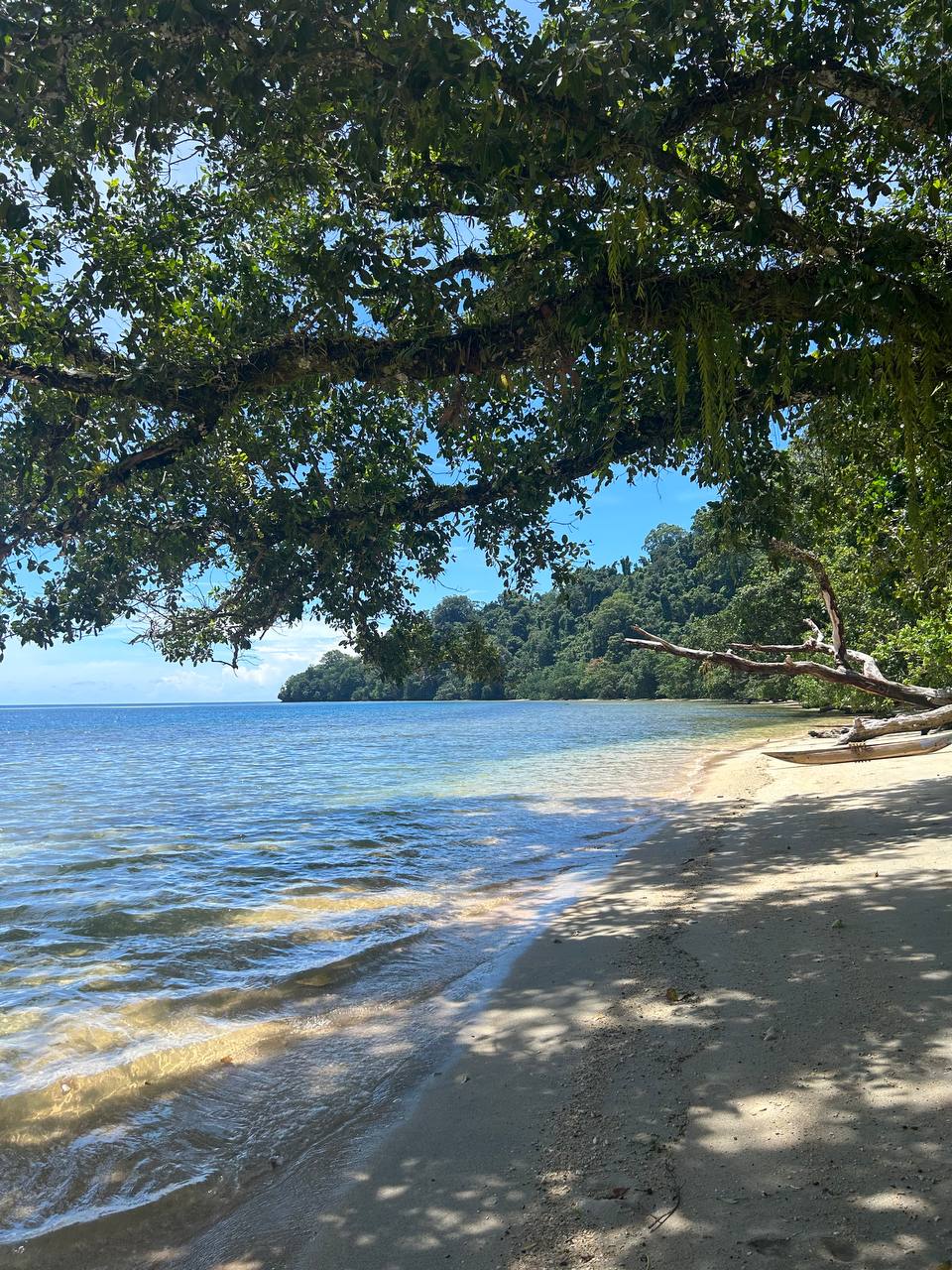The flag of Solomon Islands is more than just a piece of cloth fluttering in the Pacific breeze—it’s a symbol of the nation’s identity, resilience, and aspirations. Adopted at independence in 1977, this vibrant flag tells the story of a diverse and united archipelago.
With its striking design and meaningful symbolism, the flag of Solomon Islands is a proud emblem of this island nation’s history and culture.
Click to read about the Republic of North Solomons.
The Design of the Flag
The flag of Solomon Islands is a bold and simple design. It consists of a diagonal yellow stripe that runs from the top left to the bottom right, dividing the flag into two triangular sections. The upper triangle is blue, featuring five white stars arranged in an X pattern in the top left corner. The lower triangle is green, symbolizing the lush landscapes that dominate the islands.
Each color and element of the flag carries deep meaning:
- Blue: Representing the Pacific Ocean that surrounds the Solomon Islands and the vital role it plays in the lives of its people. The ocean is not just a geographic feature but a source of livelihood, culture, and connectivity.
- Green: Reflecting the fertile land, forests, and agriculture that sustain the nation. It also represents the islands’ natural beauty, which is a key part of their identity.
- Yellow: Symbolizing the sun and the unity that binds the people of Solomon Islands together.
- Five Stars: Representing the five main island groups at the time of independence—Guadalcanal, Malaita, Central, Western, and Eastern. The stars are a nod to the unity and cooperation of these diverse regions.
Click to read about the Honiara Hotel.

The History of the Flag
The flag of Solomon Islands was officially adopted on July 7, 1977, coinciding with the country’s independence from British colonial rule. Before independence, the Solomon Islands used the British Blue Ensign, featuring a Union Jack in the corner and a badge representing the colony.
The new flag was designed to reflect the nation’s identity as an independent and unified state. The five stars, in particular, were chosen to highlight the idea of unity among the island groups, which had historically been divided by geography, language, and culture.

The Flag in Modern Times
Today, the flag of Solomon Islands is a source of pride for its people. It flies high at government buildings, schools, and during national events. It’s also a common sight at international sporting events, where Solomon Islanders rally behind their athletes, proudly waving their flag.
However, the flag’s symbolism has also been tested. The Solomon Islands have faced significant challenges since independence, including ethnic tensions, economic struggles, and political instability. Despite these difficulties, the flag remains a symbol of hope and resilience, reminding the nation of its shared heritage and potential for unity.
Cultural Significance
For many Solomon Islanders, the flag is more than a national symbol—it’s a part of their daily lives. During festivals, celebrations, and even village gatherings, the flag is prominently displayed as a reminder of the country’s independence and identity.
The five stars, in particular, resonate deeply with the people. While the number of provinces has grown since independence, the stars remain a unifying symbol, representing the idea that the Solomon Islands is greater than the sum of its parts.
Challenges to Unity
While the flag promotes unity, the Solomon Islands is a nation of incredible diversity, with over 70 languages spoken across its islands. This diversity has, at times, led to divisions and conflicts, most notably during the ethnic tensions of the late 1990s and early 2000s.
During these difficult periods, the flag served as a reminder of what the nation strives to be—a unified and peaceful country. Efforts to rebuild and strengthen national identity often invoke the symbolism of the flag, encouraging Solomon Islanders to work together despite their differences.
Why the Flag Matters
The flag of Solomon Islands is more than just a design—it’s a story of resilience, independence, and unity. It represents the hopes and dreams of a nation that has overcome significant challenges to forge its own path.
For travelers visiting the Solomon Islands, the flag is a gateway to understanding the country’s culture and history. Whether you’re exploring the bustling streets of Honiara, diving in the crystal-clear waters, or trekking through the lush jungles, the flag is a constant reminder of the nation’s rich heritage and enduring spirit.
Explore the Solomon Islands with Young Pioneer Tours



At Young Pioneer Tours, we specialize in taking travelers to the world’s most fascinating and off-the-beaten-path destinations. The Solomon Islands, with its stunning landscapes and vibrant culture, is a place like no other. From the historical significance of World War II relics to the natural beauty of its islands, the Solomon Islands offers an adventure for every kind of traveler.
Currently we offer bespoke Solomon Island Trips, War Tours, as well as visiting as part of our Least Visited Counties Tour.
The Flag of Solomon IslandsFlag of Solomon Islands






